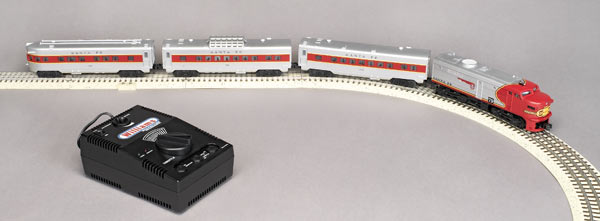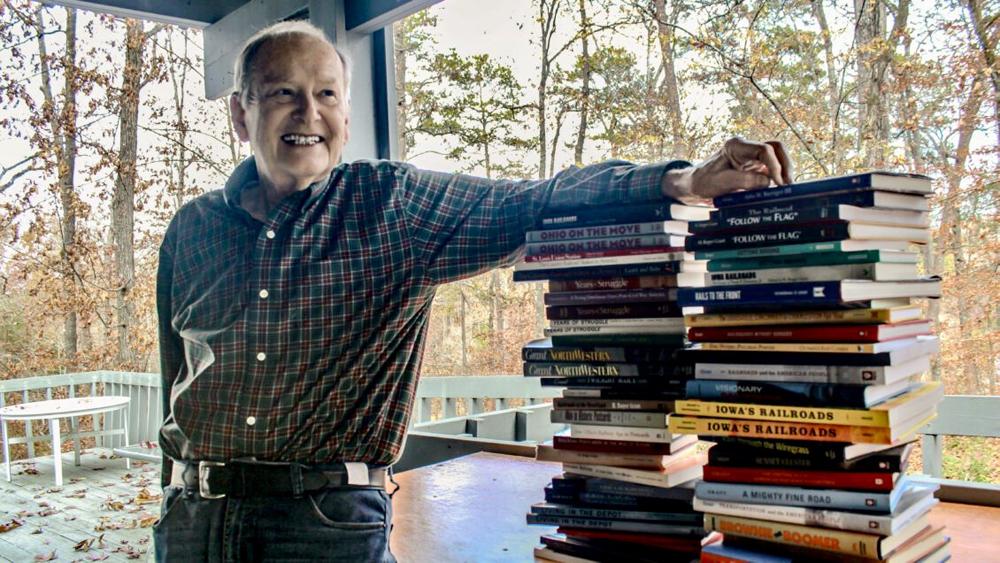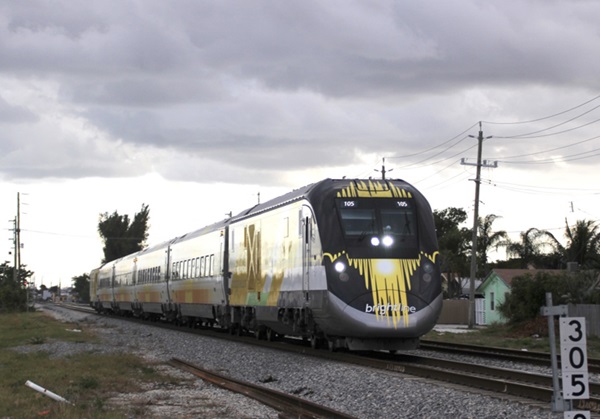As hobbyists, we should be horrified at the prospect of a set so poorly made that the owner vows, “Never again!” So starter sets are pretty important to maintaining and even growing this hobby we all love.
My short list of requirements for a quality starter set would include: solid construction and reliability, interesting rolling stock with pleasing graphics, an easy-to-use track system, and a power supply that won’t peter out when you add a few extra cars.
What we have before us today is a starter set that fills the bill. Williams by Bachmann coupled its newbie-friendly FA and traditional-sized passenger cars with Atlas O’s Industrial Rail modular track system and an Atlas power supply for a complete O gauge set that is ready to roll once you open the box.
The locomotive
Locomotion for this set is provided by an Alco FA diesel. The model isn’t the scale-sized model that Williams fielded 10 years ago (reviewed in the September 2000 issue of Classic Toy Trains). Rather, it is the smaller traditional-size Alco that we first saw in 2005 in a Union Pacific “Anniversary Set.”
The buzzword of choice when speaking of traditional-sized products is that they are selectively compressed. For my two cents, this works best when details are included – not omitted – for space consideration.
The FA body does this pretty well. It gets the most out of the flattish nose of the locomotive, with the square, grooved headlight frame and boxy marker light frames.
There really isn’t any pilot detail, and the die-cast metal coupler sticks out through a jumbo gap in the skirt that recalls the heritage of the model as a piece of O-27 equipment.
The sides have a good level of cast-in detail, including seams, doors, and grab irons. You’ll find three portholes on each side, placed inside the cast-in intake screens. You’ll also see two cast-in doors per side.
The roof detail reference points, such as the exhaust screen and rivet lines, mirror those on the prototype Alco FA. There is an add-on horn just above the engineer’s position.
The multi-color Santa Fe paint scheme was superbly executed. The silver to black to yellow to red was skillfully done, with all demarcation lines clean and crisp. The Santa Fe herald on the nose was terrific, noting that it was applied on a curved nose with cast-in doorway texture on the snout.
The passenger cars
The rolling stock is based on Lionel’s postwar no. 2400-series style. The vintage cars are childhood favorites of mine, and in spite of their smallish dimensions, I still let them out on my main line from time to time. The same applies to the rigs by Williams – except those cars run far better than my vintage equipment.
The set includes a coach, a dome observation car, and a rear observation car. These are nice, generic models with a well-balanced look. Not too long, not too short, and not too tall.
As with the originals, none of the doors open. However, there is a satisfactory level of rivet and seam texture. I’ve always liked the cast-in rooftop grab irons, the hatches and square vents, and the little circular vent knobs.
The dome car’s raised cupola looks nice, although many hobbyists may be dismayed at a lack of interior detail. They need to remember that this set is aimed at newcomers – and it is very nicely priced.
I liked the contrasting curve and angular detail of the rear observation car. Plastic lenses are mounted for the rear lights, and a clear lens is placed just above the rear door.
The roof has similar detailing to the other cars, but adds a cast-in antenna for a radio-telephone. Very modern, in a pre-cell phone way.
While the paint scheme isn’t as elaborate as that on the locomotive, it is equally well applied. The car’s body is silver with red accent stripes along the windows, bracketed with yellow stripes above and below the red.
Each car has die-cast metal couplers, wheels, and truck frames. Each passenger car truck has one pickup roller, 6½ inches apart, so power feed to the lights was steady.
Track and transformer
The track in the Williams set is the Atlas O Industrial Rail-style of plastic-roadbed sectional “snap” track.
The track locks together, remains fairly snug, and offers good electrical connectivity. The tubular rails are formed in the shape of real railroad rails (as opposed to the flat-U head of Lionel’s FasTrack).
The track sections are nicely textured, and the brown ties are distinctive. The set comes with O-36 diameter track but the locomotive and rolling stock should operate fine on O-27 track.
The power supply is an 80-watt transformer, also in the Atlas O style. This provides a solid power level as well as the basic bell and horn controls. You can also connect to both track and accessories. This rig provided more than enough juice to easily operate the train (and all those lights in the passenger cars!).
On the test track
Our conventional low-speed average was 20.3 scale miles per hour, and our high-speed average was 97.8 scale miles per hour.
Drawbar pull was 1 pound, 5 ounces.
Each locomotive truck has one power pickup roller 6½ inches apart. Motor performance was smooth and responsive. The motors were also fairly quiet. The locomotive does not have a full sound system, but has Williams’ digital True-Blast II horn and bell, which provide sounds on demand.
One of my pet peeves with entry-level gear is that it doesn’t seem to take any time before the couplers start opening on their own (read: cheap plastic couplers). Well, I ran this set around the corners of the test track at brain-numbing speeds just one iota shy of going airborne, and I’m pleased to say that all the couplers stayed locked tight.
So at the end of the day, where are we with this product? Bachmann has done a great job with this first “plug and play” Williams starter set.
While the models represent vintage train designs from the 1940s or 1950s, they still look familiar to the general public and the paint and decoration are eye catching. Performance is very good, and the track and transformer should provide quite a bit of fun that isn’t interrupted by track coming apart or the transformer’s capacity being exceeded anytime soon.
Price: $299.95 (no. 00321)
Features: Two can-style motors, headlight, True-Blast II horn and bell; three passenger cars, loop of snap track with O-36 diameter curves, and 80-watt transformer.















It doesn't say anywhere… Does this loco have flywheels?? How about a photo with the hood off?
Thanks,
Ted S.